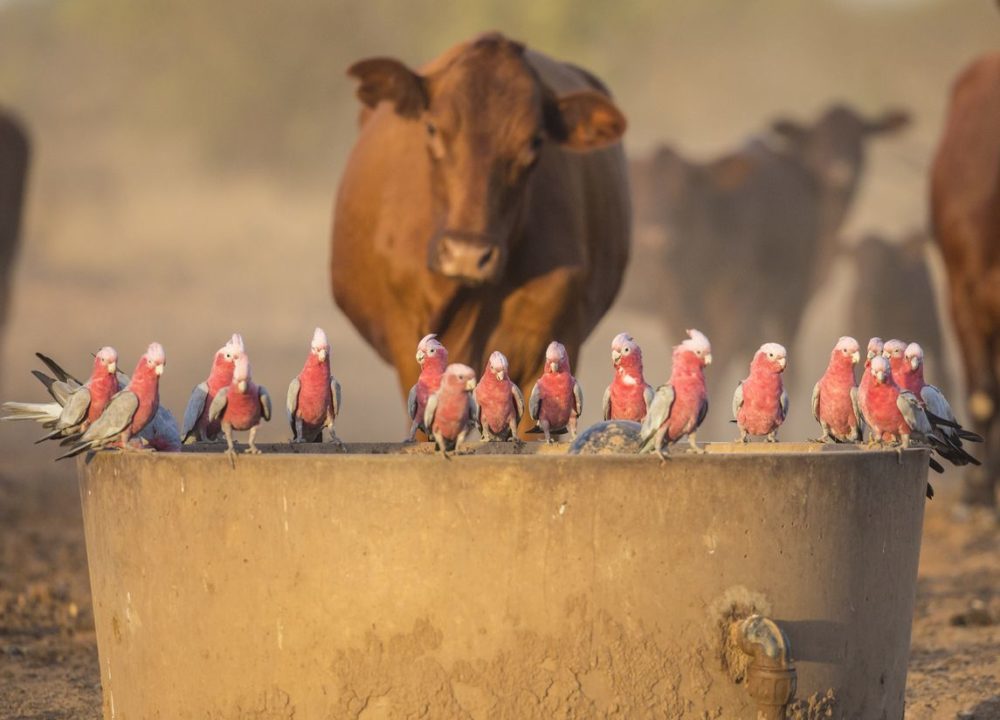Editor’s note: Justin Webb is co-founder and chairman at AgriWebb, based in Sydney, Australia. The views expressed in this guest article are the author’s own and do not necessarily represent those of AFN.
Without exception 2020 has thrown unique challenges at Australian agriculture. Admirably, and equally without exception, our farming communities have proven to be remarkably resilient.
Faced with catastrophic bushfires at the beginning of the year, the myriad disruptions caused by Covid-19, collateral damage from international geopolitical events, and the ever present threat of drought – time and time again, Aussie farmers have kept our nation fed and maintained Australia’s position as a leading global exporter of premium produce.
However, when it comes to 2021 — which is bound to contain its own unforeseen problems — are we setting our agricultural industry for success?
The continued need to innovate
Despite the tremendous growth of investment into the sector, agriculture persists as one of the least digitalized industries in the world. A tired refrain is repeated — but perhaps not heard — about the genuine challenge of feeding 10 billion people by 2050. Concurrently, rising middle-class incomes in Asia and Africa are demanding more animal-based quality protein. We simply can’t achieve this with existing traditional methods.
However, we’re in luck – for technology is the ideal, robust solution to a productivity challenge.
Leveraging the millions of data points generated every day on-farm to increase productivity and efficiency, and engendering a culture of data-led decision making, will provide farmers with an increased arsenal of insights and knowledge in order to meet future challenges.
Fortunately, the investment world is waking up to this need and the contemporaneous development of the agtech ecosystem. 2020 is set to see more than $4.5 billion invested into agtech startups, surpassing the past four years by considerable margins and validating the agriculture theme at the forefront of venture portfolios.
A push for traceability
Focus on local food security and the resilience of global supply chains has become heightened not only by the pandemic, but by consumers wanting to know where their food comes from.
In 2020, we’ve seen a greater push for the adoption of technology to monitor and track meat supplies, and this will continue.
Through blockchain and digital record keeping, the industry can establish a single source of truth and digital record of on-farm production data, helping track livestock throughout the supply chain.
Not only will technologies like this enable robust traceability and biosecurity but also provide a stamp of assurance and quality for Australian agriculture on the global stage. In effect, technology will help deliver true food security from field-to-fork and unlock international export markets that are demanding evidentiary food provenance.
Achieving sustainability
Climate change isn’t a distant threat – it’s here and its effects on the farming community are real. Australia’s climate has warmed on average by 1.44 ± 0.24 degrees celsius since national records began in 1910, leading to an increase in the frequency of extreme heat events across an already dry country.
But it’s not all bad news. Agriculture is the only industry that, through encouraged and incentivized proliferation of technology and operational practices, can become sustainably and demonstrably carbon negative.
Telus expands agtech reach with lead in AgriWebb’s $23m Series B round – read more here
Heading into 2021, with the aid of data-driven technology to forecast future seasons and soil nutrition, farmers should look to pursue regenerative practices which will reduce chemical use. They can also offset their carbon emissions through carbon credits. These are realistic aims for Australian agriculture as the country’s Emissions Reduction Fund already incentivizes farmers to cut down the amount of greenhouse gases they create, by encouraging activities that store carbon.
In addition, the government’s Clean Energy Finance Corporation has dedicated investment into carbon-conscious innovation in the sector, while CSIRO — the national scientific R&D agency — has commercialized some of the most exciting and potentially impactful innovations around greenhouse gas emissions globally.
One example is the advent of animal feed supplements containing ‘red seaweed’ Asparagopsis taxiformis, which can reduce bovine methane emissions by 80%, is truly a game-changer for the whole world. If just 10% of the global herd are fed less than 30 grams of Asparagopsis each day it would have the same greenhouse reductive effect as removing 50 million cars from the road.
An investment for the economy
Agriculture is a cornerstone for the Australian economy, delivering 12% of the country’s GDP when including processing and retail. Currently, the sector is valued at A$60 billion ($45.7 billion) – somewhat short of the government’s aim of A$100 billion ($76.2 billion) by 2030.
To achieve this goal and secure the long-term economic strength of Australian agriculture, we’re going to need to see the government take a more active role in assisting farmers in the uptake of new technologies and innovations.
CSIRO, Woolworths unveil FutureFeed, a seaweed supplement that cuts cow methane by 80% – read more here
For example, in 2020 we saw the the South Australia state government introduce the Livestock AgTech Adoption Rebate to encourage South Australian livestock producers to invest in new technologies. We’ll hopefully see similar moves and even more meaningful quantums of support across other states and territories, so that farmers nationwide can obtain the necessary training and assistance to implement innovation successfully.
Looking to the year ahead, there will be a greater necessity for innovation, traceability, and sustainability. Beyond 2021, the government’s aim of having a A$100 billion Australian agriculture industry is realistically achievable over the next nine years; however, technology and government-backed investment will need to be a driving factor.




